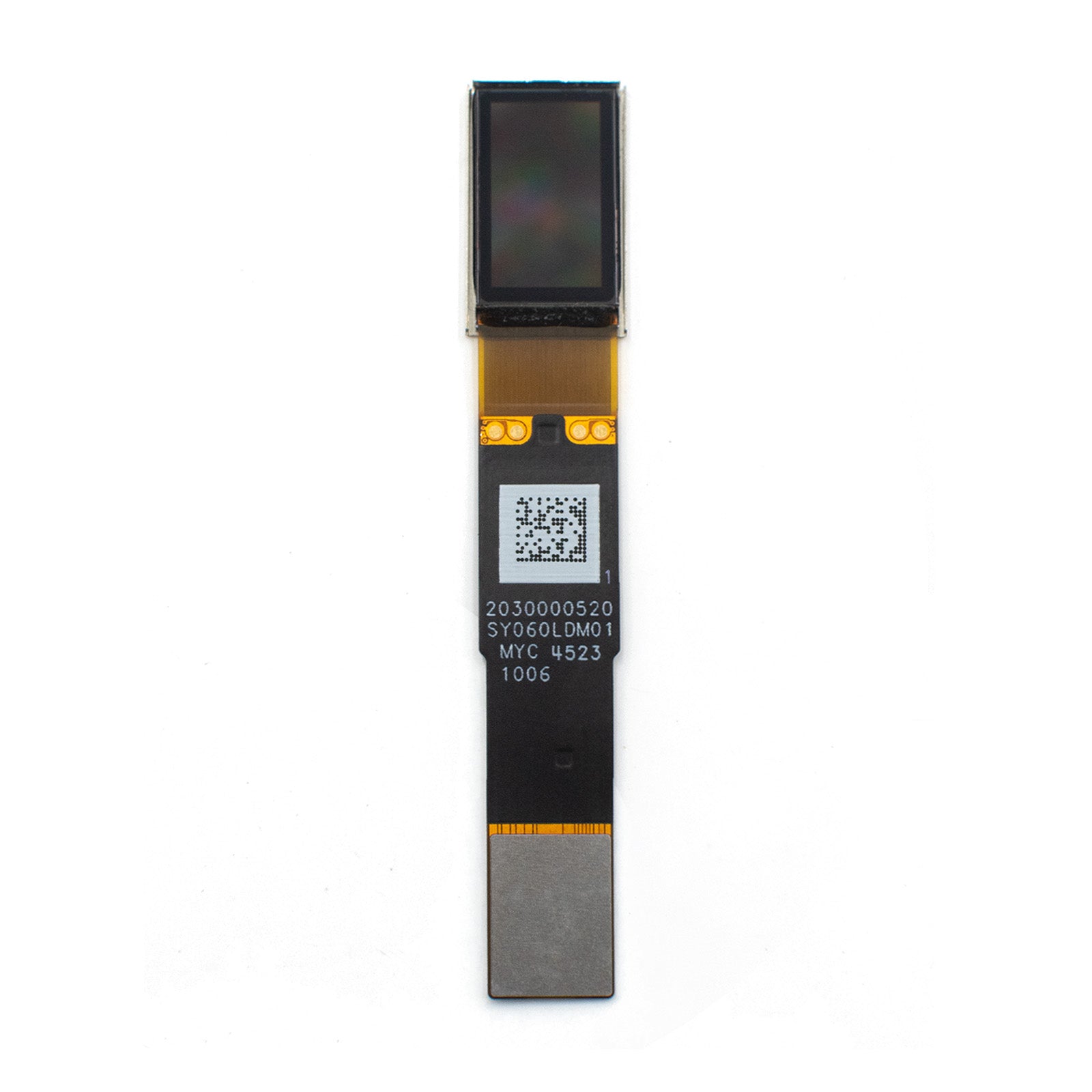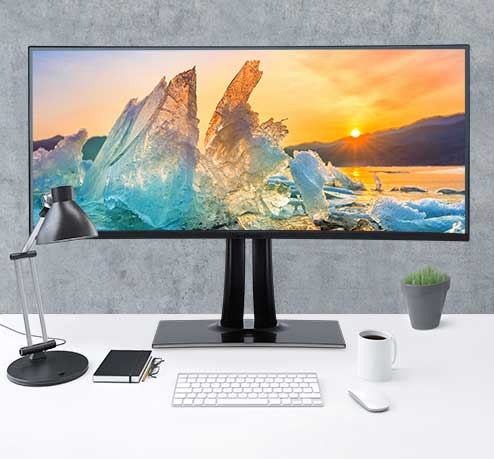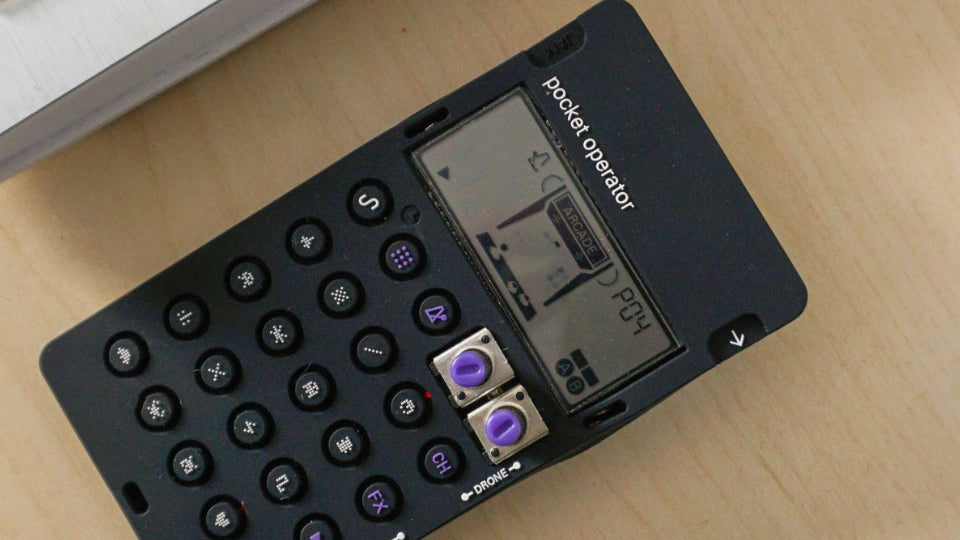TFT, a subset of LCD, often outperforms basic LCD types like TN panels: IPS TFT (used in iPhones) offers 178° viewing angles and 1000:1 contrast, vs TN’s 160° and lower contrast. Its active matrix enables 5-8ms response, sharpening motion clarity for daily use.
LCD Basics
In its natural state, this crystal lattice twists light passing through it by approximately 90 degrees. However, when a low-voltage electric field—typically between 2 to 5 volts—is applied, the crystals untwist, blocking the light. This basic principle of using electricity to control the passage of light is the foundation of every LCD. The first viable LCDs, developed in the 1970s, had incredibly simple matrices, capable of displaying only numbers or very basic characters with a response time of several hundred milliseconds, making moving images impossible.
Imagine a simple display with a 100 x 100 pixel grid. Instead of having 10,000 individual control circuits (one for each pixel), a passive-matrix shares control lines. It sends a signal down each row and column sequentially. This "multiplexing" is slow because the electric charge applied to a single pixel is not sustained; it leaks away quickly. This leads to severe performance trade-offs. For a standard passive-matrix TN display from the 1990s, the response time—the time it takes a pixel to change from black to white and back—could be as high as 300 milliseconds. This is why scrolling text on an old device would leave blurry, ghosted trails. The viewing angles are also severely restricted, often dropping to a usable contrast ratio (e.g., 10:1) at just 30 degrees off-axis. Color reproduction is another weakness; early color passive LCDs could only manage a very limited palette, often 256 colors or 4,096 colors (12-bit), with poor saturation because the shared control made precise voltage control for each RGB sub-pixel nearly impossible.
|
Parameter |
Typical Old Passive-Matrix LCD (e.g., TN/STN) |
Modern TFT LCD (Basic TN Type) |
|---|---|---|
|
Response Time |
200 - 500 ms |
1 - 5 ms |
|
Viewing Angle |
< 30 degrees (usable) |
Up to 170 degrees (for modern IPS/VA panels) |
|
Color Depth |
256 - 4,096 colors |
16.7 million colors (8-bit) or more |
|
Contrast Ratio |
50:1 to 100:1 |
1000:1 to 3000:1 |
|
Addressing Method |
Passive-Matrix (shared control) |
Active-Matrix (dedicated transistor per pixel) |
The core issue is the refresh rate and signal integrity. In a passive grid, the voltage applied to a pixel is not constant. By the time the controller cycles back to a specific pixel, the charge has significantly decayed, leading to crosstalk (where activating one pixel affects its neighbors) and an overall dim, blurry image. The maximum refresh rate for such displays is limited, often capping at around 30 Hz for complex images, which is insufficient for smooth video playback.
Old LCDs
While a revolutionary step away from bulky CRT monitors, their underlying architecture came with severe, inherent trade-offs. The core issue was the passive-matrix grid system, which relied on a time-sharing method to address pixels. In a typical 320 x 240 pixel (QVGA) display from the 1990s, the controller would scan through each of the 240 rows in sequence, a process that could take hundreds of milliseconds to complete a single screen refresh. This slow scanning frequency, often below 30 Hz, combined with the rapid decay of the electrical charge at each pixel, resulted in performance that was fundamentally inadequate for dynamic content.
The most noticeable problem for users was the abysmal response time. A modern LCD panel aims for a response time of 1-5 milliseconds (ms), but a standard Twisted Nematic (TN) passive-matrix LCD suffered from times in the 200-500 ms range.
This means a single pixel transition took nearly half a second, making smooth scrolling or video playback physically impossible and resulting in severe "ghosting" where trailing images would linger on the screen.
Without a dedicated component to hold a charge, the voltage applied to a liquid crystal cell would rapidly diminish after the controller moved to the next row, causing the crystals to relax back to their state too slowly. This slow response also crippled the color depth and contrast. Achieving a specific shade of grey or color requires holding a precise voltage level on the pixel for a sustained period. The passive grid's signal decay made this precision impossible. Consequently, while a theoretical 12-bit system could produce 4,096 colors, the actual usable palette was much smaller, with colors appearing washed out. Contrast ratios—the difference between the brightest white and the darkest black—were typically around 50:1 to 100:1, compared to the 1000:1 ratios common in even basic modern displays. This led to flat, murky images with no depth.
TFT Explained
The fundamental leap from passive to active-matrix addressing transformed liquid crystal displays from sluggish, low-fidelity screens into the vibrant multimedia interfaces we rely on today. This revolution was powered by the Thin-Film Transistor (TFT). The core innovation is deceptively simple: instead of sharing control lines across a grid, a dedicated, microscopic transistor and a storage capacitor are deposited directly onto the glass substrate for each individual pixel. For a standard High Definition (1920 x 1080) display, this means integrating not just over 2 million pixels, but more than 6 million of these transistor-capacitor pairs—one for each red, green, and blue sub-pixel. This architectural shift moved the technology from a time-shared, imprecise signaling system to a dedicated, persistent one. The storage capacitor acts as a tiny battery, holding a precise electrical charge for the entire duration of a 16.7-millisecond frame (at 60 Hz), allowing for exact control over the liquid crystals. This single change addressed the most critical flaws of passive-matrix LCDs, enabling a 100-fold improvement in response times, true 24-bit color depth (16.7 million colors), and viewable angles that expanded from a narrow 30 degrees to over 160 degrees.
The active-matrix system operates with a precision that was previously impossible. Here’s a breakdown of the core components at each pixel:
-
The Thin-Film Transistor: This acts as a high-speed switch. When the scanning signal reaches its row (e.g., row 50), the transistor opens for a fraction of a microsecond, allowing a data voltage from the column line—precisely calibrated for the desired shade of red, green, or blue—to pass through.
-
The Storage Capacitor: This is the key to performance. It immediately stores the incoming charge, typically in the range of 0.5 to 5 picofarads, and maintains a stable voltage level—with a deviation of less than 0.1 volts—across the liquid crystal cell until the next refresh cycle. This constant voltage is what eliminates ghosting and enables precise color gradations.
-
The Liquid Crystal Cell: With a stable voltage applied, the crystals maintain a specific twist angle with high accuracy, controlling the amount of light passing through with far greater consistency than in a passive grid.
This precise, per-pixel control directly enabled the high resolutions we take for granted. While early passive-matrix screens topped out at around 640 x 480 pixels (VGA) with severe performance penalties, TFT-LCDs quickly scaled to XGA (1024 x 768), Full HD (1920 x 1080), and beyond. The stability of the charge on the capacitor allows for a much faster and more accurate transition of the crystals. Response times plummeted from several hundred milliseconds to under 25 ms by the late 1990s, and now sit at a standard 1-5 ms for modern gaming panels. This faster switching speed, combined with the ability to refresh the entire screen at 60 Hz, 120 Hz, or even 240 Hz, made smooth full-motion video not just possible, but exceptional.
Key Differences
The core divergence is between a shared, inefficient system and a dedicated, precision-controlled one. Where a passive-matrix display with a resolution of 640 x 480 (VGA) would manage its 307,200 pixels through a few hundred shared control lines, a TFT screen of the same resolution employs at least 921,600 individual transistors (one per sub-pixel) for direct control. This isn't a minor upgrade; it's a complete re-engineering that transforms performance. The difference is most apparent in specifications that directly impact user experience: response time shifts from a sluggish 300-500 milliseconds to a crisp 1-5 milliseconds, viewing angles expand from a narrow 30-degree cone to a wide 178-degree arc, and color depth jumps from a limited 4,096-color palette to a rich 16.7-million-color spectrum.
The most critical difference lies in the addressing method: passive-matrix is a time-shared, imprecise system where control signals are diluted across a grid, while active-matrix provides a dedicated, persistent circuit for each individual sub-pixel.
This architectural shift creates a night-and-day difference in several key areas:
-
Response Time and Motion Clarity: A passive-matrix pixel, lacking a dedicated charge-storing capacitor, can take 200 ms or more to switch states. This is over 50 times slower than a typical 4 ms modern TFT panel. This slow response results in severe motion blur, making it impossible to display video at a standard 24-30 frames per second without heavy ghosting. TFT's capacitor holds a stable voltage, enabling crisp, clear motion that supports not only video but also high 144 Hz or 240 Hz refresh rates for gaming.
-
Color Accuracy and Depth: In a passive grid, the fluctuating voltage on each pixel makes it impossible to accurately maintain the precise intermediate levels needed for subtle color shades. Achieving a specific grey tone requires holding a voltage of, for example, 2.5 volts with a tolerance of less than ±0.1V. This is unachievable in a passive system, leading to a washed-out look and a color palette often limited to 12-bit (4,096 colors). The TFT's storage capacitor maintains the required voltage with high stability, enabling true 8-bit per channel (24-bit total) color, which allows for 256 distinct shades each of red, green, and blue, resulting in over 16.7 million possible colors with smooth gradients.
-
Viewing Angles and Contrast: The inconsistent voltage application in passive-matrix LCDs causes the liquid crystals to perform very poorly when viewed off-center. Contrast ratios—the difference between the brightest white and darkest black—often plummeted below 10:1 at just 30 degrees from center. TFT technology, especially later variants like IPS (In-Plane Switching), was specifically designed to overcome this. Modern TFT panels maintain a contrast ratio of over 100:1 even at extreme 178-degree viewing angles, making the screen shareable without color inversion or major dimming.
-
Power Efficiency and Cost: While passive-matrix screens had fewer components, their inefficiency often required higher voltage pulses (>5V) to overcome slow response, wasting power. TFTs, by contrast, use precise, lower voltage control (~3.3V), leading to better per-pixel power efficiency. However, the manufacturing process for depositing millions of transistors on a large glass substrate was initially over 200% more expensive than producing a comparable passive-matrix screen, a cost difference that has now narrowed to a small percentage as the technology has matured and scaled to high volumes over the past 20 years.
Why TFT Wins
Improved by two orders of magnitude, dropping from a blur-inducing 200-500 milliseconds to a crisp 1-5 milliseconds. This 98% reduction in pixel transition time is what made smooth video playback on a laptop screen a reality, supporting frame rates of 60 frames per second (Hz) and beyond. Similarly, the ability to hold a stable charge enabled true 24-bit color depth, expanding the palette from a mere 4,096 colors to a rich 16.7 million colors, a 4,000-fold increase in color information. This precision directly results in a typical contrast ratio jumping from a flat 100:1 to a depth-providing 1000:1 or higher, creating images with realism that passive screens could never achieve.
The viewing angle, once a crippling limitation, was expanded from a narrow 30-degree cone to a wide 178-degree arc, effectively making the screen viewable from almost any position without color distortion. This was crucial for the adoption of LCDs in everything from collaborative work environments to in-car displays. Furthermore, the stability of the TFT design enabled higher resolutions and larger screen sizes without the severe performance penalties that plagued passive-matrix technology. A passive screen with a resolution of 1024 x 768 (XGA) would suffer from extreme ghosting and dimness, whereas TFT panels scaled efficiently to 4K (3840 x 2160) and larger diagonals from 24 inches to 65 inches and more, becoming the standard for high-definition televisions.
|
Performance Parameter |
Typical Passive-Matrix LCD |
Typical TFT (Active-Matrix) LCD |
Practical Advantage |
|---|---|---|---|
|
Response Time |
200 - 500 ms |
1 - 5 ms |
Enables smooth video, gaming (>60 Hz) |
|
Color Depth |
4,096 colors (12-bit) |
16.7 million colors (24-bit) |
Photorealistic images, accurate color grading |
|
Contrast Ratio |
100:1 |
1000:1 to 3000:1 |
Deeper blacks, more vibrant images |
|
Viewing Angle |
< 30 degrees (usable) |
Up to 178 degrees (IPS Technology) |
Screen sharing, wider placement flexibility |
|
Maximum Viable Size/Resolution |
Up to 10" @ VGA (640x480) |
65"++ @ 4K (3840x2160) |
Viable for TVs, monitors, and public displays |
While the initial power draw for a TFT's more complex circuitry was higher, its efficient control system meant it didn't require the high-voltage pulses (>5V) that passive matrices used to combat ghosting. This led to a lower total power consumption for a given brightness level, a critical factor for the battery life of mobile devices. For example, a modern 14-inch laptop TFT display might draw between 2 to 4 watts at 250 nits of brightness, whereas a hypothetical passive-matrix screen of the same size and luminance would be significantly less efficient.
The Simple Answer
The improvement in response time alone, from a sluggish 300-500 milliseconds to a crisp 1-5 milliseconds, represents a 99% reduction in delay, a change that single-handedly enabled the fluid video playback and interactivity we now take for granted.
The core of the answer lies in the shift from a shared, inefficient system (passive-matrix) to a dedicated, precision-controlled one (active-matrix). This is the difference between a dim, blurry screen that struggles to display scrolling text and a bright, sharp display capable of rendering fast-motion video at 120 frames per second.
The superiority of TFT is quantifiable across every key performance metric that defines a display's quality and usability. The following table provides a conclusive, data-driven summary of the comparison:
|
Performance Metric |
Old Passive-Matrix LCD |
Modern TFT-LCD (Active-Matrix) |
Impact on User Experience |
|---|---|---|---|
|
Response Time |
200 - 500 ms |
1 - 5 ms |
Enables smooth video, gaming; eliminates ghosting. |
|
Color Depth |
4,096 colors (12-bit) |
16.7 million colors (24-bit) |
Photorealistic imagery with smooth gradients. |
|
Viewing Angle |
< 30 degrees (usable) |
178 degrees (horizontal & vertical) |
Screen is viewable from almost any position. |
|
Contrast Ratio |
50:1 to 100:1 |
1000:1 to 3000:1 |
Deeper blacks, more vibrant and lifelike images. |
|
Maximum Practical Resolution |
~VGA (640x480) |
8K (7680x4320) and beyond |
Supports extremely high detail for large screens. |
The initial cost premium for TFT panels in the late 1990s and early 2000s was significant, often 200-300% higher than comparable passive-matrix screens. However, advancements in manufacturing yield and economies of scale over a 15-year period drove costs down to a point where the premium nearly disappeared.
En lire plus

The world of micro-displays continues to evolve, and DisplayModule now offers a groundbreaking addition: the 0.6-inch Micro-OLED display (SY060LDM01). Engineered for compact devices demanding exce...

An IPS (In-Plane Switching) display is a type of LCD panel that offers wider viewing angles (up to 178 degrees) and better color accuracy compared to standard screens, making it ideal for graphic d...



Laisser un commentaire
Ce site est protégé par hCaptcha, et la Politique de confidentialité et les Conditions de service de hCaptcha s’appliquent.